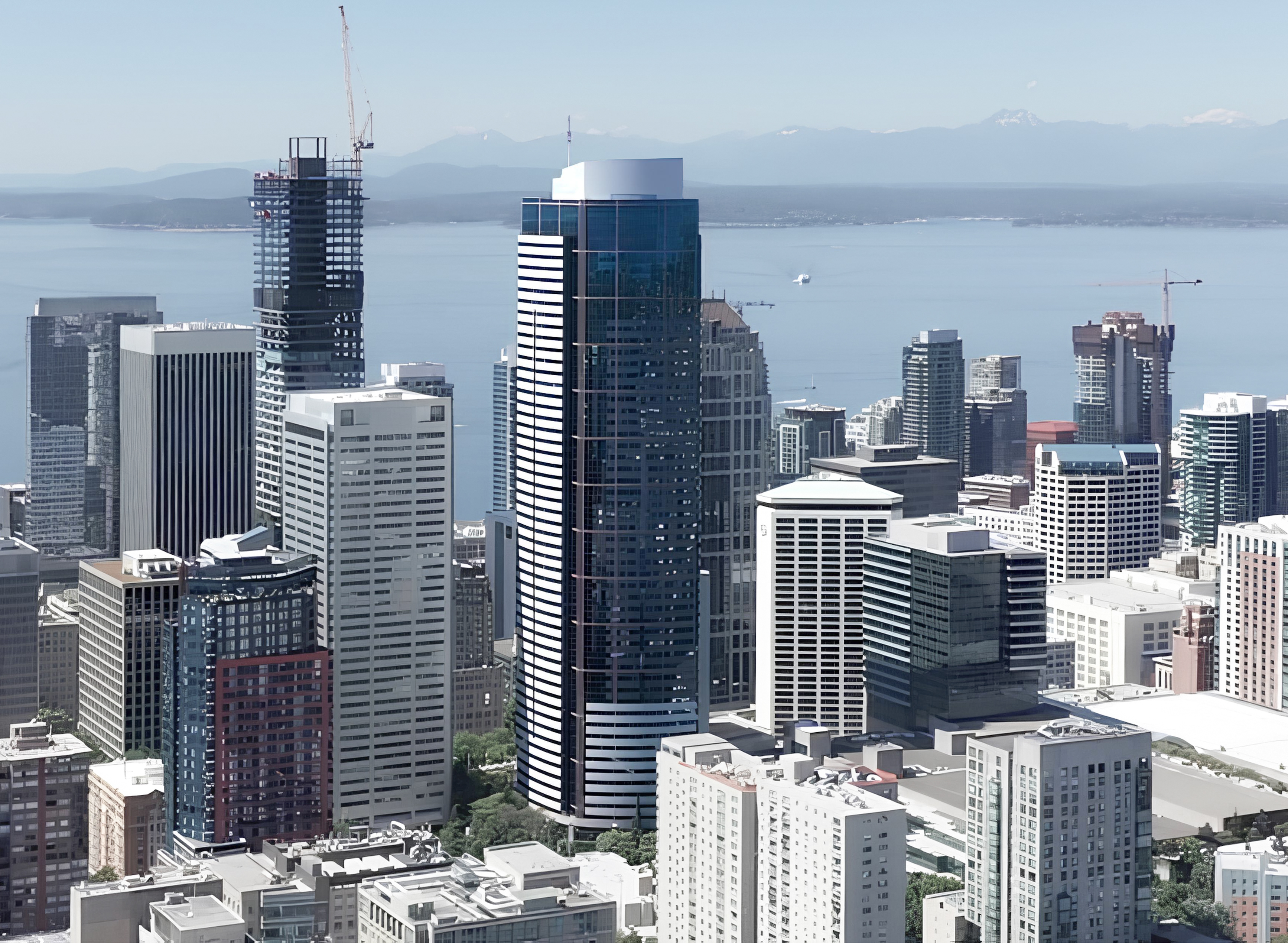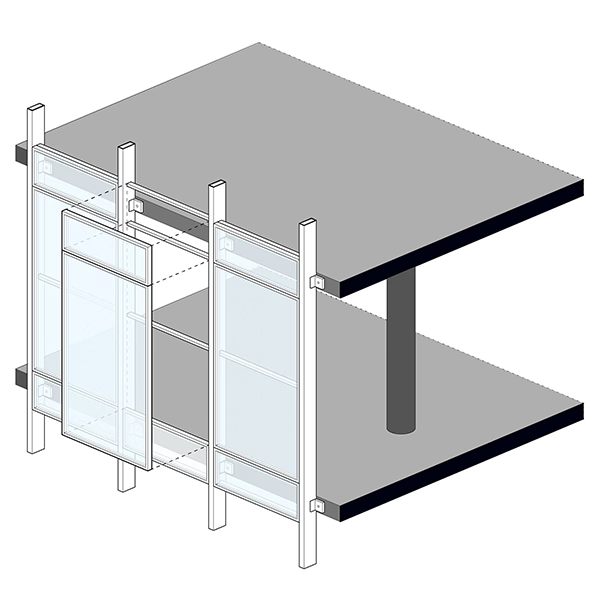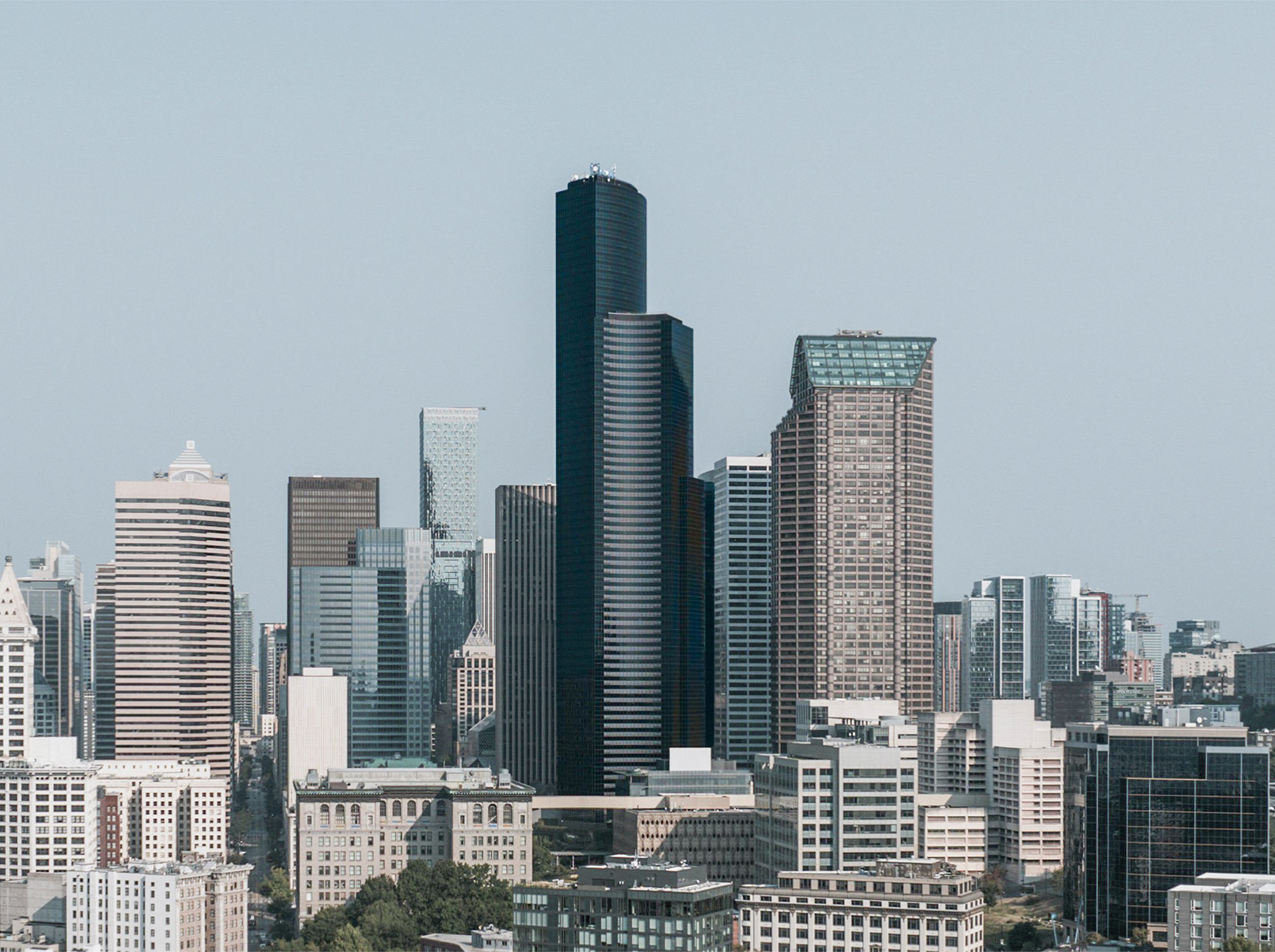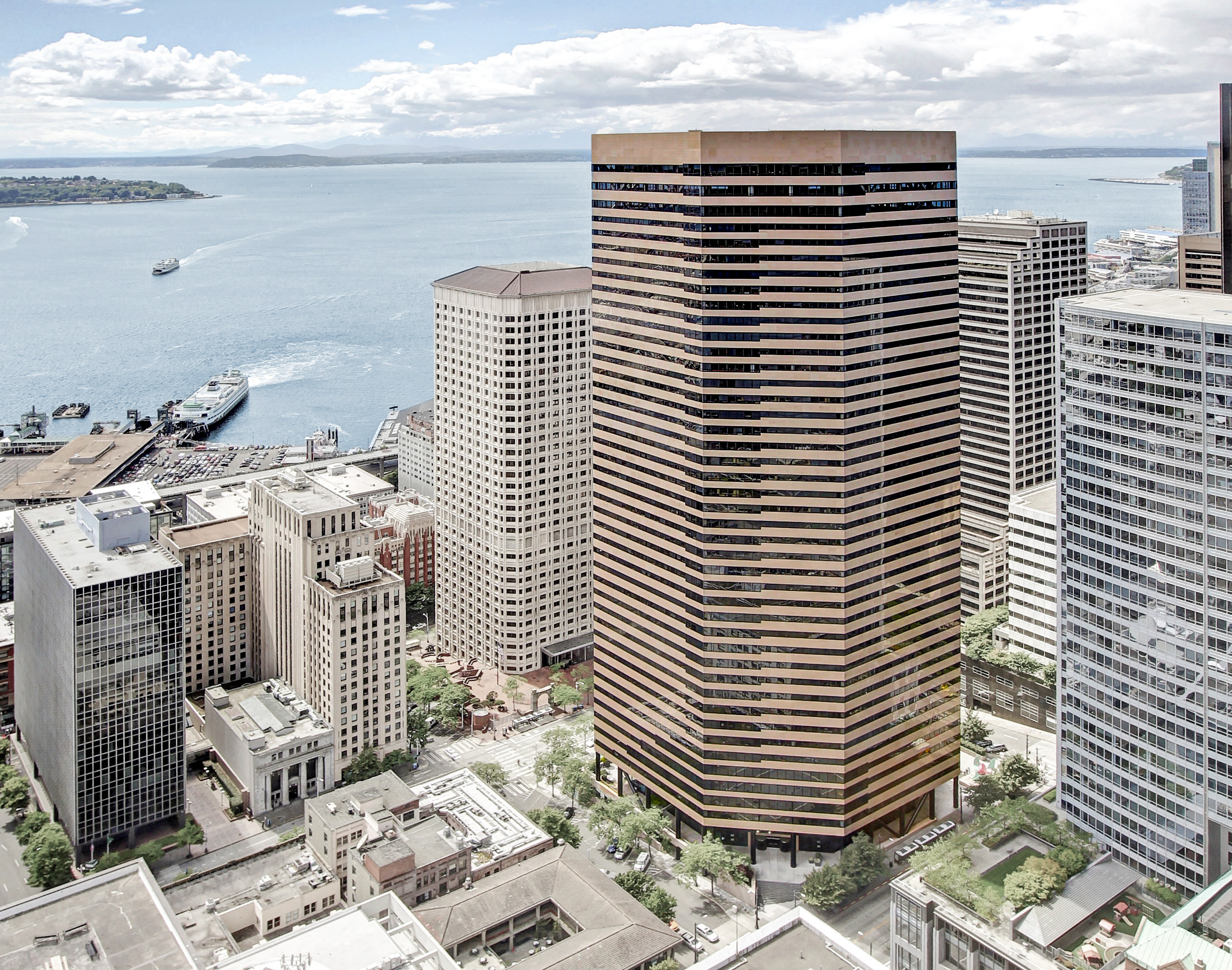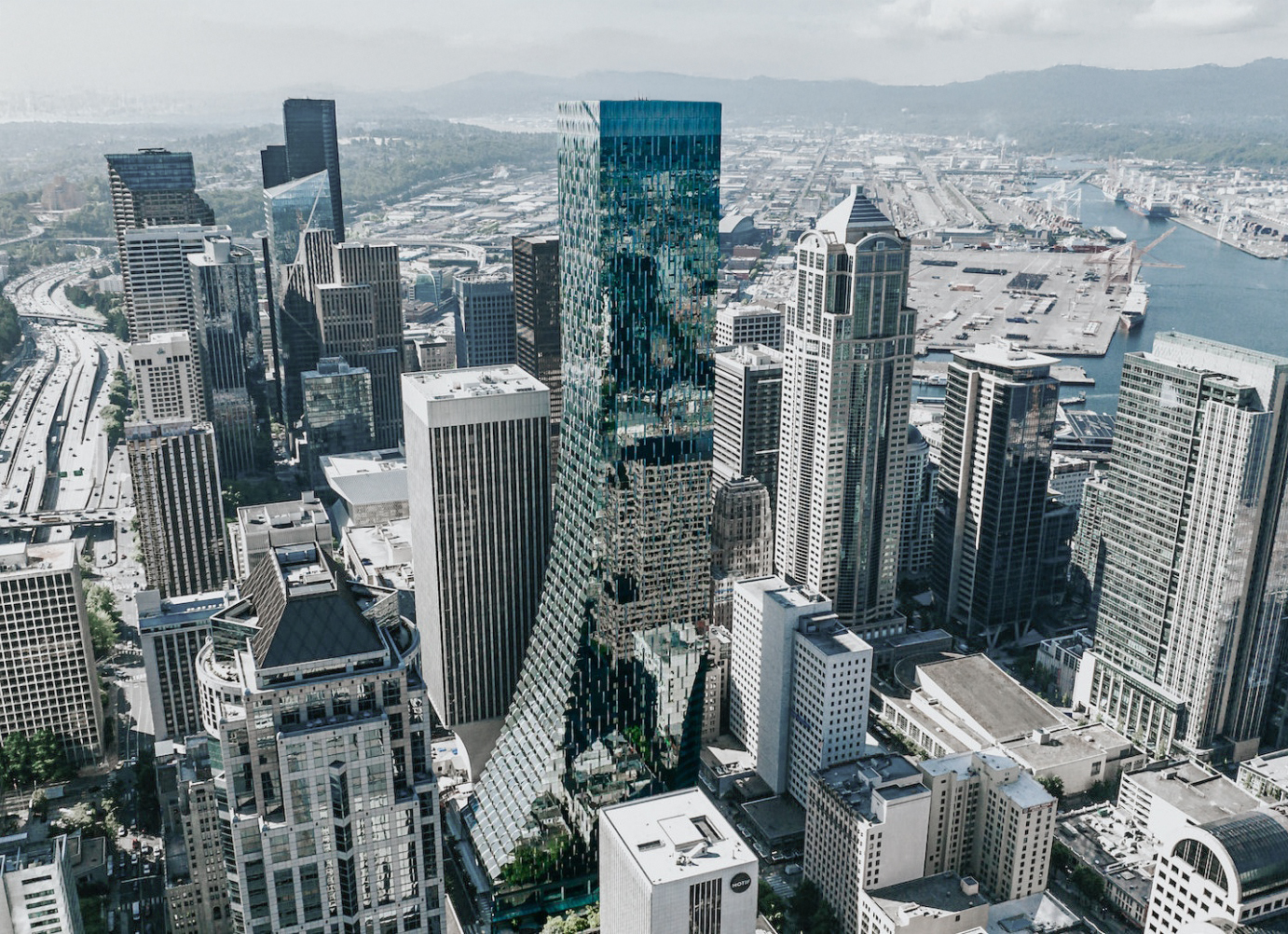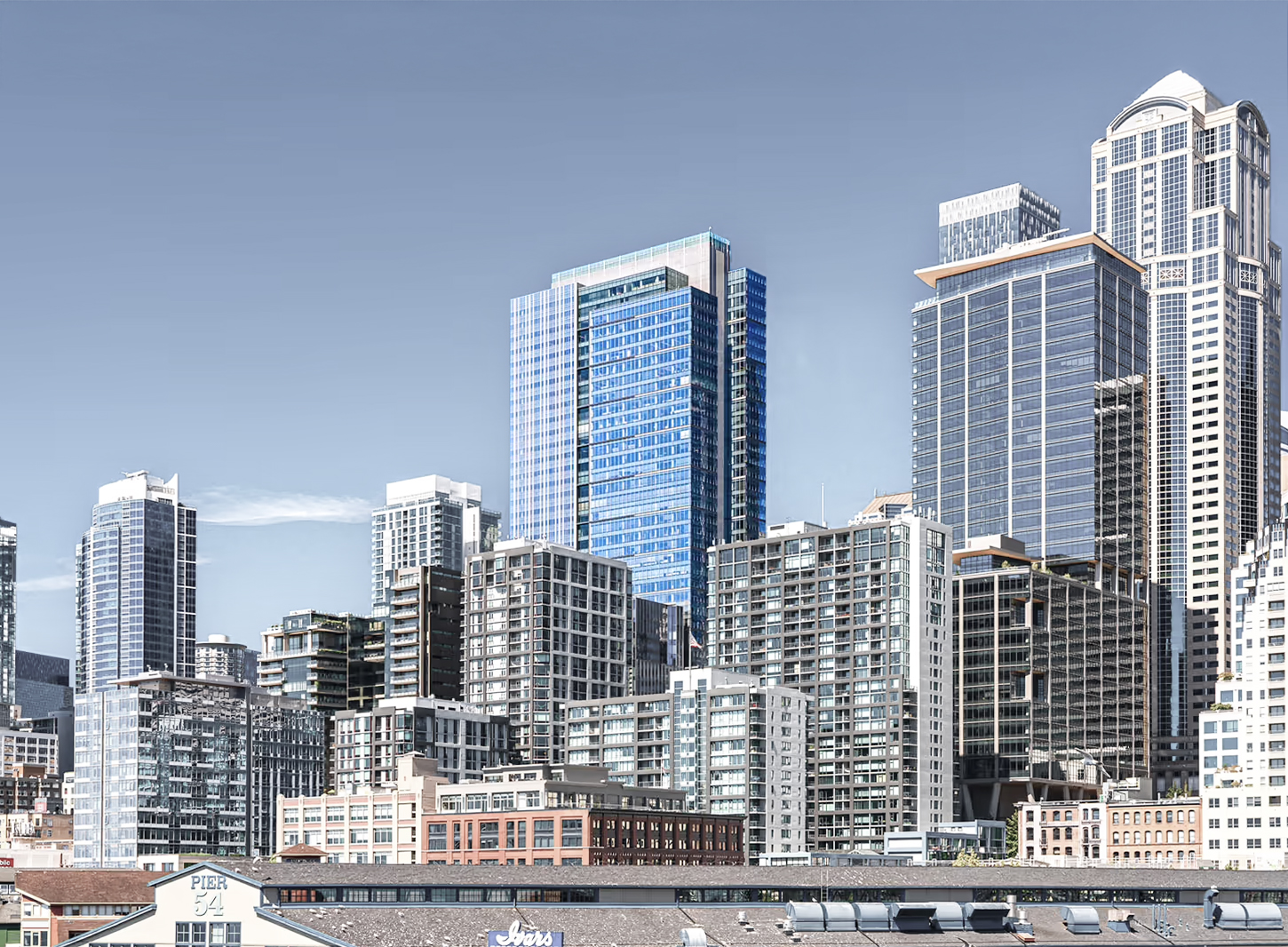The Two Union Square is a Modern Style skyscraper designed in 1984 by NBBJ, and built between 1987 and 1989 in Seattle, WA.
Two Union Square is not the only name you might know this building by though. The building is, or has also been known as Zippo Building.
Its precise street address is 601 Union Street, Seattle, WA. You can also find it on the map here.
The Two Union Square has received multiple architecture awards for its architectural design since 1989. The following is a list of such prizes and awards:
- AIA National Honor Award for Interior Architecture
- IIDA PNW INawards, INworkplace Macro Winner
- Interior Design Magazine Best of Year Award
- BOMA Building of the Year in 1999
The Two Union Square building is the tallest of the two skyscrapers that make up the Union Square complex in downtown Seattle.
The complex features 1,100 parking spaces, a three-story shopping center, a public courtyard, and an underground plaza that connects to several buildings on Fifth Avenue..
At the time of its completion in 1989 the Two Union Square incorporated solutions that were quite advanced at the time, these included being the first building to use high-strength concrete-filled steel tubes (19,000 PSI) for it's structure and hyper-efficient viscoelastic dampers for stability.
The building underwent a major restoration in 2019. The architect commissioned to undertake this restoration was NBBJ.
